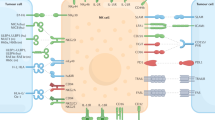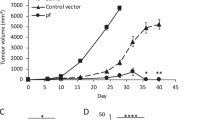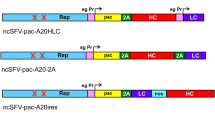Abstract
CELL-mediated lysis of cells infected by certain viruses or coupled with haptenic groups has been reported to occur only in situations in which the target cell and cytotoxic effector cell are either syngeneic or semi-allogeneic and cannot be observed when they are allogeneic1–4. Thus, spleen cells from random-bred chickens bearing Rous sarcomas are very cytotoxic to autochthonous tumour cells but show little cytotoxicity on allogeneic tumour cells. Mouse cells infected with lymphocytic choriomeningitis virus (LCM) are only lysed by sensitised thymus-derived cells (T cells) syngeneic or semi-allogeneic to the target cells2. Similarly, spleen cells sensitised in vitro to tirinitrophenyl (TNP) coupled syngeneic spleen cells were reported to lyse only syngeneic but not allogeneic hapten-coupled target cells3. Since in all these models the induction of cell-mediated cytotoxicity was carried out in a syngeneic situation, it is clear that the phenomenon is not a result of the induction step, but is mediated through the effector step of cell-mediated cytotoxicity. It was concluded from these results that the cytotoxic effector cells recognise the modified self antigen2–4 rather than the determinants introduced into the cell membrane (the virus or the hapten). I report here, however, results which show that TNP-specific cytotoxicity mediated by cytotoxic T cells (T killer cells) can be detected under appropriate assay conditions.
This is a preview of subscription content, access via your institution
Access options
Subscribe to this journal
Receive 51 print issues and online access
$199.00 per year
only $3.90 per issue
Buy this article
- Purchase on Springer Link
- Instant access to full article PDF
Prices may be subject to local taxes which are calculated during checkout
Similar content being viewed by others
References
Wainberg, M. A., Markson, Y., Weiss, D. W., and Doljanski, F., Proc. natn. Acad. Sci. U.S.A., 71, 3565–3569 (1974).
Doherty, P. C., and Zinkernagel, R. M., J. Immun., 114, 30–33 (1975).
Shearer, G. M., Eur. J. Immun., 4, 527–533 (1974).
Zinkernagel, R. M., and Doherty, P. C., Nature, 251, 547–548 (1974).
Dennert, G., and Hatlen, L. E., J. Immun. (in the press).
Todd, R. F., Stulting, R. D., and Amos, D. B., J. cell. Immun. (in the press).
Lesley, J., Hyman, R., and Dennert, G., J. natn. Cancer Inst., 53, 1759–1765 (1974).
Iverson, G. M., Nature, 227, 273–274 (1970).
Mitchison, N. A., Eur. J. Immun., 1, 18–27 (1971).
Rubin, B., and Wigzell, H., Nature, 242, 467–469 (1973).
Möller, E., Scand. J. Immun., 3, 339–355 (1974).
Author information
Authors and Affiliations
Rights and permissions
About this article
Cite this article
DENNERT, G. Cell-mediated immunity to hapten modified self- and non-self antigens. Nature 255, 712–713 (1975). https://doi.org/10.1038/255712a0
Received:
Accepted:
Issue Date:
DOI: https://doi.org/10.1038/255712a0
This article is cited by
-
In vivo immunisation and reaction against TNP-modified splenocytes
Nature (1978)
-
Are contact hypersensitivity cells cytotoxic?
Nature (1975)
Comments
By submitting a comment you agree to abide by our Terms and Community Guidelines. If you find something abusive or that does not comply with our terms or guidelines please flag it as inappropriate.



